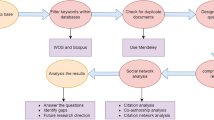Abstract
In this paper, a genetic algorithm with new multi-parent crossover (GA-MPC) is used for solving the optimal power flow problem. This method is tested on the IEEE 30-bus test system for 10 different cases where, in addition to the total fuel cost, different complexities and constraints like: emission, multi-fuels, valve-point effect and prohibited zones are considered. The effectiveness and robustness of the GA-MPC method are assessed using a statistical study and a comparative study with some well-known optimization methods. The obtained results along with the comparison study indicate that the GA-MPC method provides effective and high-quality solution when solving the optimal power flow problem even for complicated and highly constrained working conditions.








Similar content being viewed by others
References
Santhosh A, Farid AM, Youcef-Toumi K (2014) Real-time economic dispatch for the supply side of the energy-water nexus. Appl Energy 122:42–52. doi:10.1016/j.apenergy.2014.01.062
Kumar A, Gao W (2009) Pattern of secure bilateral transactions ensuring power economic dispatch in hybrid electricity markets. Appl Energy 86:1000–1010. doi:10.1016/j.apenergy.2008.11.012
Duman S, Güvenç U (2012) Optimal power flow using gravitational search algorithm. Energy Convers Manag 59:86–95. doi:10.1016/j.enconman.2012.02.024
Niknam T, rasoul Narimani M, Jabbari M, Malekpour AR (2011) A modified shuffle frog leaping algorithm for multi-objective optimal power flow. Energy 36:6420–6432. doi:10.1016/j.energy.2011.09.027
Shabanpour-Haghighi A, Seifi AR, Niknam T (2014) A modified teaching-learning based optimization for multi-objective optimal power flow problem. Energy Convers Manag 77:597–607. doi:10.1016/j.enconman.2013.09.028
Sayah S, Zehar K (2008) Modified differential evolution algorithm for optimal power flow with non-smooth cost functions. Energy Convers Manag 49:3036–3042. doi:10.1016/j.enconman.2008.06.014
Frank S, Steponavice I, Rebennack S (2012) Optimal power flow: a bibliographic survey I Formulations and deterministic methods. Energy Syst 3:221–258. doi:10.1007/s12667-012-0056-y
Frank S, Steponavice I (2012) Optimal power flow: a bibliographic survey II non-deterministic and hybrid methods. Energy Syst 3:259–289. doi:10.1007/s12667-012-0057-x
AlRashidi M, El-Hawary M (2009) Applications of computational intelligence techniques for solving the revived optimal power flow problem. Electr Power Syst Res 79:694–702. doi:10.1016/j.epsr.2008.10.004
Bakirtzis AG, Biskas PN, Zoumas CE, Petridis V (2002) Optimal power flow by enhanced genetic algorithm. IEEE Trans Power Syst 17:229–236. doi:10.1109/TPWRS.2002.1007886
Elsayed SM, Sarker Ra, Essam DL (2014) A new genetic algorithm for solving optimization problems. Eng Appl Artif Intell 27:57–69. doi:10.1016/j.engappai.2013.09.013
Bouchekara HREH, Abido M a, Chaib a E, Mehasni R (2014) Optimal power flow using the league championship algorithm: a case study of the Algerian power system. Energy Convers Manag 87:58–70. doi:10.1016/j.enconman.2014.06.088
Bouchekara HREH, Chaib AE, Abido MA, El-Sehiemy RA (2016) Optimal power flow using an Improved colliding bodies optimization algorithm. Appl Soft Comput 42:119–131. doi:10.1016/j.asoc.2016.01.041
Chaib AE, Bouchekara HREH, Mehasni R, Abido MA (2016) Optimal power flow with emission and non-smooth cost functions using backtracking search optimization algorithm. Int J Electr Power Energy Syst 81:64–77. doi:10.1016/j.ijepes.2016.02.004
Bouchekara HREH, Abido MA, Chaib AE (2016) Optimal power flow using an improved electromagnetism-like mechanism method. Electr Power Compon Syst 44:434–449. doi:10.1080/15325008.2015.1115919
Bouchekara HREH, Abido Ma, Boucherma M (2014) Optimal power flow using teaching-learning-based optimization technique. Electr Power Syst Res 114:49–59. doi:10.1016/j.epsr.2014.03.032
Bouchekara HREH, Chaib AE, Abido MA (2016) Multiobjective optimal power flow using a fuzzy based grenade explosion method. Energy Syst. doi:10.1007/s12667-016-0206-8
Bouchekara HREH (2014) Optimal power flow using black-hole-based optimization approach. Appl Soft Comput. doi:10.1016/j.asoc.2014.08.056
Bouchekara HRE-H, Abido MA (2014) Optimal power flow using differential search algorithm. Electr Power Compon Syst 42:1683–1699. doi:10.1080/15325008.2014.949912
Xiong G, Shi D, Duan X (2013) Multi-strategy ensemble biogeography-based optimization for economic dispatch problems. Appl Energy 111:801–811. doi:10.1016/j.apenergy.2013.04.095
Niknam T, Narimani MR, Azizipanah-abarghooee R (2012) A new hybrid algorithm for optimal power flow considering prohibited zones and valve point effect. Energy Convers Manag 58:197–206. doi:10.1016/j.enconman.2012.01.017
Hardiansyah H (2013) A modified particle swarm optimization technique for economic load dispatch with valve-point effect. Int J Intell Syst Appl 5:32–41. doi:10.5815/ijisa.2013.07.05
Behrangrad M, Sugihara H, Funaki T (2011) Effect of optimal spinning reserve requirement on system pollution emission considering reserve supplying demand response in the electricity market. Appl Energy 88:2548–2558. doi:10.1016/j.apenergy.2011.01.034
Abido M a (2003) Environmental/economic power dispatch using multiobjective evolutionary algorithms. IEEE Trans Power Syst 18:1529–1537. doi:10.1109/TPWRS.2003.818693
Zimmerman RD, Murillo-Sánchez CE (2016) MATPOWER. http://www.pserc.cornell.edu/matpower/#docs. Accessed 10 Oct 2016
Abou El Ela AA, Abido MA, Spea SR (2010) Optimal power flow using differential evolution algorithm. Electr Power Syst Res 80:878–885. doi:10.1016/j.epsr.2009.12.018
Alsumait JS, Sykulski JK, Al-Othman a K (2010) A hybrid GA-PS-SQP method to solve power system valve-point economic dispatch problems. Appl Energy 87:1773–1781. doi:10.1016/j.apenergy.2009.10.007
Jubril a M, Olaniyan O a, Komolafe O a, Ogunbona PO (2014) Economic-emission dispatch problem: a semi-definite programming approach. Appl Energy 134:446–455. doi:10.1016/j.apenergy.2014.08.024
Acknowledgements
Dr. M. A. Abido would like to acknowledge the support provided by King Abdulaziz City for Science and Technology (KACST) through the Science and Technology Unit at King Fahd University of Petroleum and Minerals (KFUPM) for funding this work through Project No. 14-ENE265-04 as a part of the National Science, Technology and Innovation Plan (NSTIP).
Author information
Authors and Affiliations
Corresponding author
Rights and permissions
About this article
Cite this article
Bouchekara, H.R.E.H., Chaib, A.E. & Abido, M.A. Optimal power flow using GA with a new multi-parent crossover considering: prohibited zones, valve-point effect, multi-fuels and emission. Electr Eng 100, 151–165 (2018). https://doi.org/10.1007/s00202-016-0488-9
Received:
Accepted:
Published:
Issue Date:
DOI: https://doi.org/10.1007/s00202-016-0488-9




